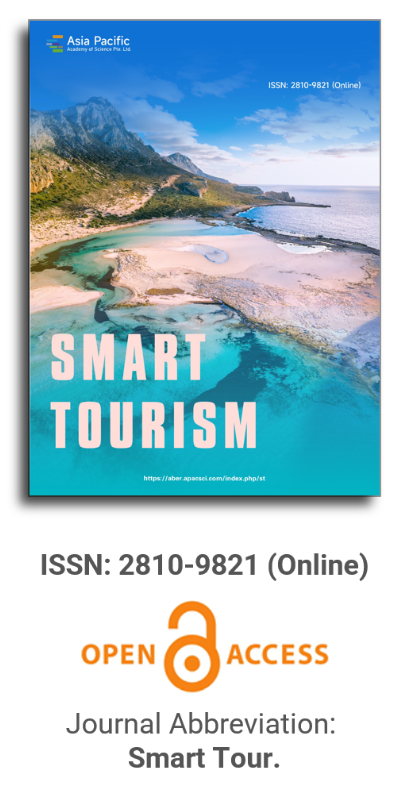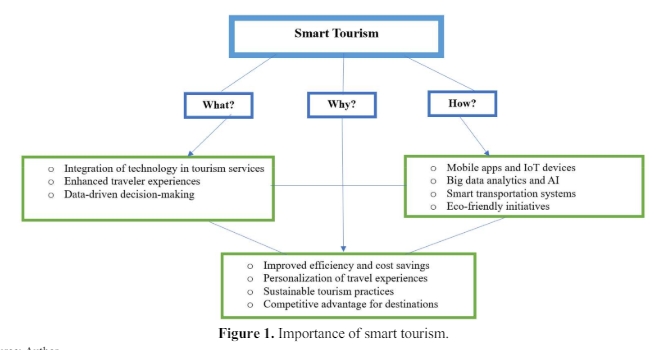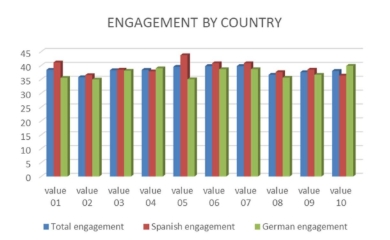


Using social exchange theory to predict residents’ perspective on factors influencing tourism development in Pokhara
Vol 5, Issue 1, 2024
Download PDF
Abstract
Tourism development involves sustainably creating and managing destinations, products, and services that balance economic, social, and environmental factors while meeting visitor and local community expectations. The purpose of this study is to understand the local people’s perception of tourism development in Pokhara, Nepal. An explanatory research design is used to show the cause-and-effect relationship between variables. The research was conducted using Social Exchange Theory (SET). The data was examined using both descriptive and inferential statistics. The sample size was determined to be 403 using non-probability sampling. A structured questionnaire was designed to collect the data using the KOBO toolbox. Furthermore, the Structure Equation Model (SEM) was the analytical approach used to process the data. Results reveal a noteworthy relationship between independent variables (such as cultural impact, social impact, environmental impact, and economic impact) and dependent variables (support for tourism development). The major challenges in tourism development have been identified, including deficient infrastructure, suboptimal tourism strategies and implementation, and inadequate government oversight. Effective mitigation of these challenges necessitates the implementation of appropriate infrastructure and development initiatives, proficient governmental management, and a concerted effort to augment the quantity and quality of hotels and accommodations. The significance of cultural, social, environmental, and economic impact cannot be understated or overstated in the context of tourism development. Addressing major challenges, the study suggests focused efforts in enhancing infrastructure and development, adopting effective management practices, and augmenting the quantity and quality of hotels and accommodations.
Keywords
References
- Devkota N, Paudel UR, Bhandari U. Conveying Impetus for Fostering Tourism and Hospitality Entrepreneurship in Touristic Destination: Lessons Learnt from Pokhara, Nepal. The Gaze: Journal of Tourism and Hospitality. 2021; 12(1): 88-111. doi: 10.3126/gaze.v12i1.35679
- Kunwar RR. Medical Tourism and Hospitality in Hospital. The Gaze: Journal of Tourism and Hospitality. 2019; 10(1): 67-123. doi: 10.3126/gaze.v10i1.22778
- Rajbhandari S, Devkota N, Khanal G, et al. Assessing the industrial readiness for adoption of industry 4.0 in Nepal: A structural equation model analysis. Heliyon. 2022; 8(2): e08919. doi: 10.1016/j.heliyon.2022.e08919
- Alvarez‐Diaz M, D’Hombres B, Ghisetti C, et al. Analysing domestic tourism flows at the provincial level in Spain by using spatial gravity models. International Journal of Tourism Research. 2020; 22(4): 403-415. doi: 10.1002/jtr.2344
- Musa UG, Mohammad AM, Abubakar S, Abdulrahman BI. Assessment of the Tourism Potentials of Gurara Waterfalls, Niger State, Nigeria. School of Environmental Technology. 2018; 24(5): 2-9.
- Rogerson CM, Lisa Z. ‘Sho’t left’: Changing domestic tourism in South Africa. Urban Forum. 2005; 16(2-3): 88-111. doi: 10.1007/s12132-005-1001-0
- Kunwar RR. Tourism and development: Science and industry interface. Kunwar, Kathmandu; 1997.
- Inkson C, Minnaert L. Tourism Management: An Introduction. Sage; 2022.
- Devkota N, Poudel UR, Hamarneh I, et al. Rethinking Westernization in Destination: Tourists’ Perception of a Touristic City. Journal of Tourism and Services. 2021; 12(23): 1-25. doi: 10.29036/jots.v12i23.261
- Bhandari K. Tourism in Nepal: post-monarchy challenges. Journal of Tourism and Cultural Change. 2010; 8(1-2): 69-83. doi: 10.1080/14766825.2010.491917
- Upreti BR, Upadhayaya PK, Sapkota T. Tourism in Pokhara, Issues, Trends and Future Prospects for Peace and Prosperity. Pokhara Tourism Council, South Asia Regional Coordination Office of NCCR North-South; 2013.
- Devkota N, Paudel UR, Bhandari U. Tourism entrepreneurs’ expectation from the provincial government in touristic city – Pokhara, Nepal. Journal of Hospitality and Tourism Insights. 2020; 3(3): 329-351. doi: 10.1108/jhti-06-2019-0082
- Pandey RN, Chettri P, Kunwar RR, Ghimire G. Case study on the effects of tourism on culture and the environment: Nepal; Chitwan-Sauraha and Pokhara-Ghandruk. Tourism Asia. 1995; 4: 66.
- Paudel UR, Devkota N, Bhandari U. Socio-Cultural and Economic Factors in Cross-Border Purchase: A Study of Customers’ Perspective in Sunauli-Nepal/India Border. Modern Economy. 2018; 09(06): 1089-1102. doi: 10.4236/me.2018.96070
- Kunwar RR. COVID-19, Tourism and Knowledge Production. Journal of APF Command and Staff College. 2022; 5(1): 13-49. doi: 10.3126/japfcsc.v5i1.49346
- Soliman M. Extending the Theory of Planned Behavior to Predict Tourism Destination Revisit Intention. International Journal of Hospitality & Tourism Administration. 2019; 22(5): 524-549. doi: 10.1080/15256480.2019.1692755
- Duarte Alonso A, Nyanjom J. Local stakeholders, role and tourism development. Current Issues in Tourism. 2015; 20(5): 480-496. doi: 10.1080/13683500.2015.1078782
- Axhausen KW, Kowald M. Social Networks and Travel Behaviour. Ashgate Publishing, Ltd.; 2015.
- Rather RA, Sharma J. Dimensionality and Consequences of Customer Engagement: A Social Exchange Perspective. Vision: The Journal of Business Perspective. 2019; 23(3): 255-266. doi: 10.1177/0972262919850923
- Stone LS, Nyaupane GP. The Tourist Gaze: Domestic versus International Tourists. Journal of Travel Research. 2018; 58(5): 877-891. doi: 10.1177/0047287518781890
- Sautter ET, Leisen B. Managing stakeholders: A tourism planning model. Annals of Tourism Research. 1999; 26(2): 312-328. doi: 10.1016/S0160-7383(98)00097-8
- Urry J. The Tourist Gaze (Theory, Culture and Society Series). Sage Publications; 2002.
- Papastathopoulos A, Ahmad SZ, Al Sabri N, et al. Demographic Analysis of Residents’ Support for Tourism Development in the UAE: A Bayesian Structural Equation Modeling Multigroup Approach. Journal of Travel Research. 2019; 59(6): 1119-1139. doi: 10.1177/0047287519874131
- Nunkoo R. Toward a More Comprehensive Use of Social Exchange Theory to Study Residents’ Attitudes to Tourism. Procedia Economics and Finance. 2016; 39: 588-596. doi: 10.1016/s2212-5671(16)30303-3
- Fredline L, Jago L, Deery M. The Development of a Generic Scale to Measure the Social Impacts of Events. Event Management. 2003; 8(1): 23-37. doi: 10.3727/152599503108751676
- Kunwar RR, Thapaliya N. A Preliminary Study of Pilgrimage Tourism in Barahachhetra, Nepal. The Gaze: Journal of Tourism and Hospitality. 2021; 12(1): 126-170. doi: 10.3126/gaze.v12i1.35681
- Dyer P, Gursoy D, Sharma B, et al. Structural modeling of resident perceptions of tourism and associated development on the Sunshine Coast, Australia. Tourism Management. 2007; 28(2): 409-422. doi: 10.1016/j.tourman.2006.04.002
- Gursoy D, Chi CG, Dyer P. Locals’ Attitudes toward Mass and Alternative Tourism: The Case of Sunshine Coast, Australia. Journal of Travel Research. 2009; 49(3): 381-394. doi: 10.1177/0047287509346853
- Kunwar RR, Ghimire H. Lumbini as international pilgrimage destination: Authenticity and significance. The Gaze: Journal of Tourism and Hospitality. 2012; 4: 1-33.
- Brida JG, Osti L, Faccioli M. Residents’ perception and attitudes towards tourism impacts. Benchmarking: An International Journal. 2011; 18(3): 359-385. doi: 10.1108/14635771111137769
- Rasoolimanesh SM, Ringle CM, Jaafar M, et al. Urban vs. rural destinations: Residents’ perceptions, community participation and support for tourism development. Tourism Management. 2017; 60: 147-158. doi: 10.1016/j.tourman.2016.11.019
- Almeida-García F, Peláez-Fernández MÁ, Balbuena-Vázquez A, et al. Residents’ perceptions of tourism development in Benalmádena (Spain). Tourism Management. 2016; 54: 259-274. doi: 10.1016/j.tourman.2015.11.007
- Paudel UR, Puri S, Parajuli S, et al. Measuring Cultural Diversity Impact in Hospitality Industry Leadership: Managerial Communication Perspective from Five Star Hotels in Kathmandu Valley, Nepal. Journal of Tourism & Adventure. 2021; 4(1): 75-88. doi: 10.3126/jota.v4i1.40680
- Afthanorhan A, Awang Z, Fazella S. Perception of Tourism Impact and Support Tourism Development in Terengganu, Malaysia. Social Sciences. 2017; 6(3): 106. doi: 10.3390/socsci6030106
- Ghulam Rabbany M, Afrin S, et al. Environmental effects of tourism. American Journal of Environment, Energy and Power Research. 2013; 1(7): 117-130.
- Yong EL. Understanding the economic impacts of sea-level rise on tourism prosperity: Conceptualization and panel data evidence. Advances in Climate Change Research. 2021; 12(2): 240-253. doi: 10.1016/j.accre.2021.03.009
- Halim MdA, Mawa MstJ, et al. Local community perception about tourism impact and community support for future tourism development: A study on Sylhet, Bangladesh. GeoJournal of Tourism and Geosites. 2022; 44(4): 1260-1270. doi: 10.30892/gtg.44410-942
- Dyer P, Gursoy D, Sharma B, et al. Structural modeling of resident perceptions of tourism and associated development on the Sunshine Coast, Australia. Tourism Management. 2007; 28(2): 409-422. doi: 10.1016/j.tourman.2006.04.002
- Lundberg E. The importance of tourism impacts for different local resident groups: A case study of a Swedish seaside destination. Journal of Destination Marketing & Management. 2017; 6(1): 46-55. doi: 10.1016/j.jdmm.2016.02.002
- Lopez Hernandez FA, de la Santísima Trinidad Mercader S. Perceived impact of tourism by the resident population in Torrevieja: national versus non-national residents. European Journal of Tourism Research. 2015; 10: 120-126.
- Kunwar RR, Ulak N. Tourism and Hospitality: Academia and Industry Interface. Journal of Tourism & Adventure. 2023; 6(1): 104-139. doi: 10.3126/jota.v6i1.58584
- Kharel S, Anup KC, Devkota N, et al. Entrepreneurs’ Level of Awareness on Knowledge Management for Promoting Tourism in Nepal. Journal of Information & Knowledge Management. 2022; 21(02). doi: 10.1142/s021964922250023x
- Comerio N, Strozzi F. Tourism and its economic impact: A literature review using bibliometric tools. Tourism Economics. 2018; 25(1): 109-131. doi: 10.1177/1354816618793762
- Franzidis A, Yau M. Exploring the Differences in a Community’s Perception of Tourists and Tourism Development. Tourism Planning & Development. 2017; 15(4): 382-397. doi: 10.1080/21568316.2017.1338199
- Lee YS. Tourist Gaze: Universal Concept. Tourism Culture & Communication. 2001; 3(2): 93-99. doi: 10.3727/109830401108750724
- Chase G, Alon I. Evaluating the Economic Impact of Cruise Tourism: A Case Study of Barbados. Anatolia. 2002; 13(1): 5-18. doi: 10.1080/13032917.2002.9687011
- Ruslan B, Lorant D, Sholpan A, et al. Impacts of tourism activities on economy of Kazakhstan. GeoJournal of Tourism and Geosites. 2018; 22(1): 480. doi: 10.30892/gtg.22217-304
- Kronenberg K, Fuchs M. Aligning tourism’s socio-economic impact with the United Nations’ sustainable development goals. Tourism Management Perspectives. 2021; 39: 100831. doi: 10.1016/j.tmp.2021.100831
- Kunwar RR. Tourism Crisis and Disaster Management. The Gaze: Journal of Tourism and Hospitality. 2016; 7: 1-36. doi: 10.3126/gaze.v7i0.15118
- Castilho D, Fuinhas JA, Marques AC. The impacts of the tourism sector on the eco-efficiency of the Latin American and Caribbean countries. Socio-Economic Planning Sciences. 2021; 78: 101089. doi: 10.1016/j.seps.2021.101089
- Comerio N, Strozzi F. Tourism and its economic impact: A literature review using bibliometric tools. Tourism Economics. 2018; 25(1): 109-131. doi: 10.1177/1354816618793762
- Singh AS, Masuku MB. Sampling techniques & determination of sample size in applied statistics research: An overview. International Journal of economics, commerce and management. 2014; 2(11): 1-22.
- Setyadi R. Analysing Tourism Application Using Information Technology Governance Trust Model in COVID-19 Pandemic Situation. Journal of Physics: Conference Series. 2021; 1842(1): 012006. doi: 10.1088/1742-6596/1842/1/012006
- Goel S, Angeli F, Singla N, et al. Development and Validation of the Motivations for Selection of Medical Study (MSMS) Questionnaire in India. PLOS ONE. 2016; 11(12): e0164581. doi: 10.1371/journal.pone.0164581
- Barbera J, Naibert N, Komperda R, et al. Clarity on Cronbach’s Alpha Use. Journal of Chemical Education. 2020; 98(2): 257-258. doi: 10.1021/acs.jchemed.0c00183
- Agus P, Yuli S. Partial Least Squares Structural Squation Modeling (PLS-SEM) Analysis for Social and Management Research: A Literature Review. Journal of Industrial Engineering & Management Research. 2021; 2(4): 114-123.
- Cangur S, Ercan I. Comparison of Model Fit Indices Used in Structural Equation Modeling Under Multivariate Normality. Journal of Modern Applied Statistical Methods. 2015; 14(1): 152-167. doi: 10.22237/jmasm/1430453580
- Hair JF, Hult GTM, Ringle CM, et al. Partial Least Squares Structural Equation Modeling (PLS-SEM) Using R. Springer International Publishing; 2021. doi: 10.1007/978-3-030-80519-7
- Hair JF, Howard MC, Nitzl C. Assessing measurement model quality in PLS-SEM using confirmatory composite analysis. Journal of Business Research. 2020; 109: 101-110. doi: 10.1016/j.jbusres.2019.11.069
- Polas MRH, Kabir AI, Sohel-uz-zaman AS, et al. Blockchain Technology as a Game Changer for Green Innovation: Green Entrepreneurship as a Roadmap to Green Economic Sustainability. Journal of Open Innovation: Technology, Market, and Complexity. 2022; 8(1): 1-19. https://doi.org/10.3390/ joitmc8020062
- Kock N. Common Method Bias in PLS-SEM. International Journal of e-Collaboration. 2015; 11(4): 1-10. doi: 10.4018/ijec.2015100101
- Iddagoda A, Manta O, Dissanayake H, et al. Combatting Environmental Crisis: Green Orientation in the Sri Lanka Navy. Journal of Risk and Financial Management. 2023; 16(3): 180. doi: 10.3390/jrfm16030180
- Hair JF, Sarstedt M, Hopkins LG, Kuppelwieser V. Partial least squares structural equation modeling (PLS-SEM). European Business Review. 2014; 26(2): 106-121. doi: 10.1108/ebr-10-2013-0128
- Wen J, Hussain H, Waheed J, et al. Pathway toward environmental sustainability: mediating role of corporate social responsibility in green human resource management practices in small and medium enterprises. International Journal of Manpower. 2021; 43(3): 701-718. doi: 10.1108/ijm-01-2020-0013
- Streukens S, Leroi-Werelds S. Bootstrapping and PLS-SEM: A step-by-step guide to get more out of your bootstrap results. European Management Journal. 2016; 34(6): 618-632. doi: 10.1016/j.emj.2016.06.003
- Purwanto A, Asbari M, Santoso TI. Education Management Research Data Analysis: Comparison of Results between Lisrel, Tetrad, GSCA, Amos, SmartPLS, WarpPLS, and SPSS For Small Samples. Nidhomul Haq: Jurnal Manajemen Pendidikan Islam. 2021; 6(2): 382-399. doi: 10.31538/ndh.v6i2.1575
- Aguirre-Urreta MI, Rönkkö M. Statistical Inference with PLSc Using Bootstrap Confidence Intervals. MIS Quarterly. 2018; 42(3): 1001-1020. doi: 10.25300/misq/2018/13587
- Sarstedt M, Danks NP. Prediction in HRM research—A gap between rhetoric and reality. Human Resource Management Journal. 2021; 32(2): 485-513. doi: 10.1111/1748-8583.12400
Supporting Agencies
Copyright (c) 2024 Samikshya Poudel, Devid Kumar Basyal, Niranjan Devkota, Udaya Raj Paudel, Purnima Lawaju, Ranjana Kumari Danuwar
License URL: https://creativecommons.org/licenses/by/4.0/

This site is licensed under a Creative Commons Attribution 4.0 International License (CC BY 4.0).

Prof. Hung-Che Wu
Nanfang College, Guangzhou
China
Indexing & Archiving
Asia Pacific Academy of Science Pte. Ltd. (APACSCI) specializes in international journal publishing. APACSCI adopts the open access publishing model and provides an important communication bridge for academic groups whose interest fields include engineering, technology, medicine, computer, mathematics, agriculture and forestry, and environment.



.jpg)
.jpg)

.jpg)

